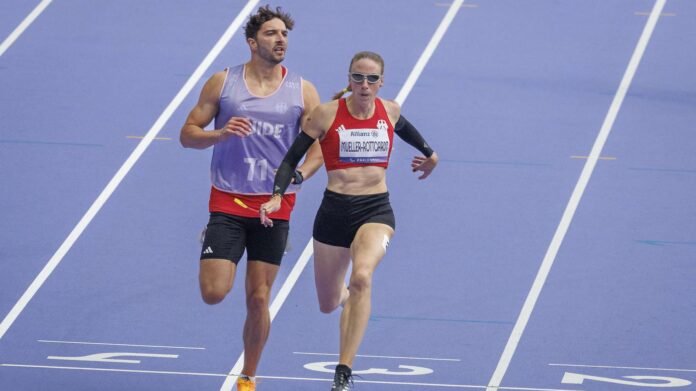For the International Paralympic Committee (IPC), the issue of women at the Paralympics an important concern. President Andrew Parsons says: “Since 2016, the IPC has invested millions of euros every year in Paralympic sports development, with a real focus on increasing female participation at all levels.” This work is beginning to bear fruit.
In fact, the participation of women in the Paralympics has improved in recent years. A total of 1,000 women competed at the Paralympics in Paris in 1983. Athletes With 2417 male participants, that is a rate of 45 percent. Higher than ever before – in Tokyo it was 42 percent. At the 2000 Games in Sydney, 988 female athletes competed, less than half as many (2883 men).
The Paralympics are still a long way from the 50/50 ratio that was achieved at the Olympic Games this year. “There is definitely progress. More nations than ever before have sent women to the Paralympics,” says Andrea Bundon, assistant professor at the University of British Columbia and an expert in this field. “And even though it is not perfect yet, with the media coverage, I felt for the first time that female athletes were being recognized for their talent.”
Bundon competed in the 2010 and 2014 Paralympic Winter Games, serving as a guide for visually impaired skiers from Canada.
Eight women in wheelchair rugby – a success
She cites wheelchair rugby as an example of the successful inclusion of women. The sport is the only one in which men and women play on the same team. The proportion of women is higher than ever, but there are still not many women. Of a total of 96 rugby players, eight are female. There are no women in three of the eight teams. And this is despite the fact that a possible physical disadvantage is compensated for with a women’s bonus. During classification, each male and female player is assigned a point. Female athletes are deducted an additional half point. A team can bring a total of eight points onto the field.
In the run-up to the games, German player Mascha Mosel spoke about the unbalanced gender ratio. She is one of two women in the German team, along with Britta Kripke. She would think it would be cool if the sport were not so male-dominated, but believes that there is an increasing trend in the proportion of women: “At the last World Cup, we had the most women in history with 13. It would be cool if more and more women dared to try it out.”
Improving the participation of women in the Paralympics is also important to the President of the German Disabled Sports Association (DBS), Friedhelm Julius Beucher: “Of the 148 athletes, including guides, 67 are women in Paris.” That corresponds to a quota of 45 percent and an increase compared to Tokyo (43 percent). In addition to the “obvious” equal premiums for men and women There is also financial support for pregnancy and returning to professional sport.
Beucher says that the 50/50 quota at the Paralympics is the logical consequence of the measures taken by the DBS and IPC. However, he points out that the objective can only be implemented if the appropriate basis and structures are in place. At the Games in Los Angeles in 2028, a women’s blind football tournament in planning.
In Paris, only a men’s tournament played, although the sport is played by men and women in a non-Paralympic context. In response to a press inquiry from the Tagesspiegel, the IPC refers to its website, which lists the development of women’s participation. The IPC does not mention any concrete measures on how this will be further improved in the future.
The Winter Games are not quite there yet
The slow but positive developments in summer sports contrast with the Paralympic Winter Games, where significantly less is happening. At the last Winter Games in Beijing, the proportion of women was 24 percent. According to Bundon, this depends on various factors and is also more difficult to change. On the one hand, it is due to the overall smaller scale of the Winter Games, but also to a very male-dominated environment.
In the mixed sport of para ice hockey there was just one woman. “The mixed category does more harm than good. It allows sports organizations to say they don’t have to support the women’s program because there is already an opportunity for women to play on a team, even if that’s not an option for most,” Bundon says.
For the Canadian, the real goal is not to meet a quota. “The IPC needs to better define what it means by gender equality. At the moment they tend to talk about gender balance, but that doesn’t get to the heart of the question of why women participate in sport less than men,” she says. In general, she is optimistic that the situation will continue to improve in the coming years.
For a long time, it was taboo to criticize the “feel-good story” of the Paralympics. The new generation of athletes is ready to tackle the problems. Some tough conversations still need to be had.
